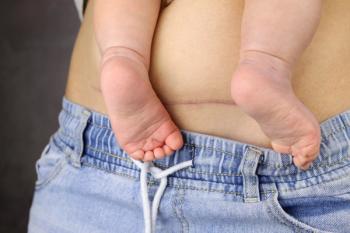
- Vol 67 No 1
- Volume 67
- Issue 01
Cytology dual-stain biomarker for detecting HPV-driven cervical precancer
A prospective observational screening study has concluded a cytology dual-stain (DS) biomarker effectively triages women who test positive for primary human papillomavirus (HPV) and are at higher risk of developing cervical cancer, irrespective of the HPV genotype.
The clinical validation of CINtec PLUS Cytology (Roche Diagnostics), which was approved by the US Food and Drug Administration in March 2020, was published in the International Journal of Cancer.1
“This is a biomarker-based triage test that can be used to stratify HPV-positive women, according to their disease risk,” said senior author, Thomas C. Wright, Jr, MD, professor emeritus of pathology and cell biology at Columbia University in New York, New York.
For DS, “specimens are stained using both p16 and Ki-67,” Wright told Contemporary OB/GYN®. “p16 is a small cell cycle regulatory protein that is usually expressed in cells that are not replicating, whereas Ki-67 is a proliferation marker that is expressed in cells that are replicating.”
As a result, individual cells should not coexpress both p16 and Ki-67 under normal conditions, according to Wright. “The coexpression of these 2 proteins indicates a transforming HPV infection is present and the woman is at elevated risk for having high-grade cervical neoplasia,” he said.
The study enrolled 35,263 women, aged 25 to 65 years, who were having routine cervical cancer screening visits at 1 of 32 clinical sites in 16 states across the US between September 2017 and November 2018. Overall, 4927 HPV-positive women with credible DS results were included in the analysis.
DS sensitivity for greater than or equal to cervical intraepithelial neoplasia Grade 2 (CIN2) and greater than or equal to CIN Grade 3 (CIN3) at baseline was 91.2% and 91.9%, respectively, for women who tested positive for the HPV genotype 16 or 18. In women with 12 other high-risk HPV genotypes, DS sensitivity was 83.0% and 86.0%, respectively.
DS alone to triage HPV-positive women indicated significantly higher sensitivity and specificity than HPV16/18 genotyping with cytology triage of the other 12 genotypes, as well as significantly higher sensitivity but lower specificity than using cytology alone.
The risk of CIN2 in HPV-positive, DS-negative women was 3.6%, as opposed to 7.4% in triage-negative women via HPV16/18 genotyping with cytology for the 12 other genotypes, and 7.5% for cytology alone (P < .0001).
In summary, DS demonstrated better risk stratification than cytology-based strategies and provided high reassurance against precancers, both at baseline and at 1-year follow-up, regardless of the HPV genotype. Most surprising about the study results “is how similar the performance of DS was to other large studies,” Wright said.
HPV women who test positive for either the 16 or 18 genotypes are typically referred to colposcopy, then cytology determines which women who test positive for any of the 12 other genotypes need colposcopy vs those who can be given more time to clear their infection.
“Unfortunately, because the sensitivity of cytology is relatively low, women who test positive for 1 of the 12 other HPV genotypes with negative cytology have a high enough risk of high-grade neoplasia that they need to return for retesting in 12 months, which is both inconvenient and expensive,” Wright said. “In contrast, HPV-positive, DS-negative women have a low enough risk for high-grade neoplasia that they normally do not need to be referred to colposcopy.”
Moreover, depending on the risk threshold used to determine the cutoff for retesting at 12 months compared with a return to interval screening once every 3 to 5 years, DS-negative women—especially those with 1 or more of the 12 other HPV genotypes—might be eligible for a return to interval screening, according to Wright.
Despite the advantages of the biomarker, 2 potential barriers to widespread adoption are the cost of DS vs cytology and that DS requires a specific slide stainer, which some smaller laboratories do not have.
Disclosure:
Wright is a consultant to Roche, BD Life Sciences, INOVIO Pharmaceuticals, and Q2 Solutions. He is also a speaker for Roche and BD Life Sciences.
Reference:
1. Wright TC Jr, Stoler MH, Ranger-Moore J, et al. Clinical validation of p16/Ki-67 dual-stained cytology triage of HPV-positive women: results from the IMPACT trial. Int J Cancer. 2021;10.1002/ijc.33812. doi:10.1002/ijc.3381
Articles in this issue
almost 4 years ago
Designing your patient’s prenatal care “PATH”almost 4 years ago
Hysterosalpingography for boomers to zoomersalmost 4 years ago
2019 ASCCP guidelines: Pearls for practitionersalmost 4 years ago
Addressing the health care system strainalmost 4 years ago
In Memoriam: Michael J. Hennessy Sralmost 4 years ago
Menstrual cycle length affects future vascular healthalmost 4 years ago
Counseling on adverse events of intrauterine contraceptionabout 4 years ago
New risk factors for vulvovaginal candidiasis and recurrenceNewsletter
Get the latest clinical updates, case studies, and expert commentary in obstetric and gynecologic care. Sign up now to stay informed.




















